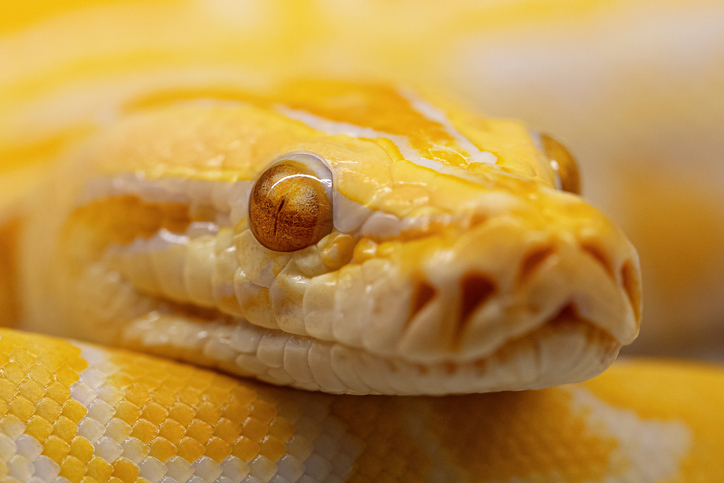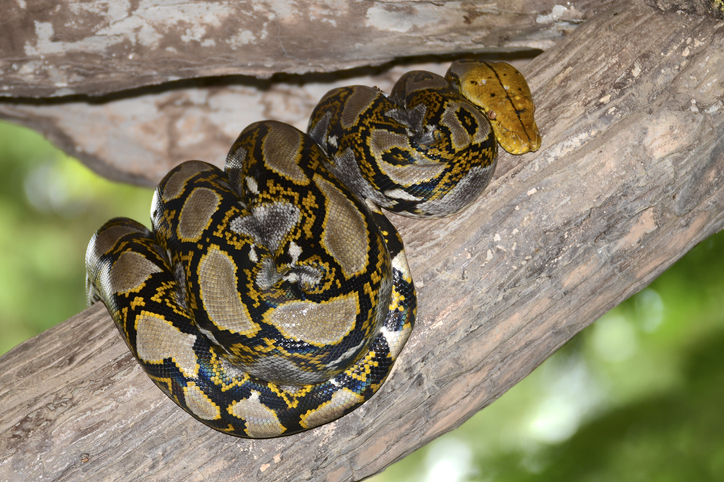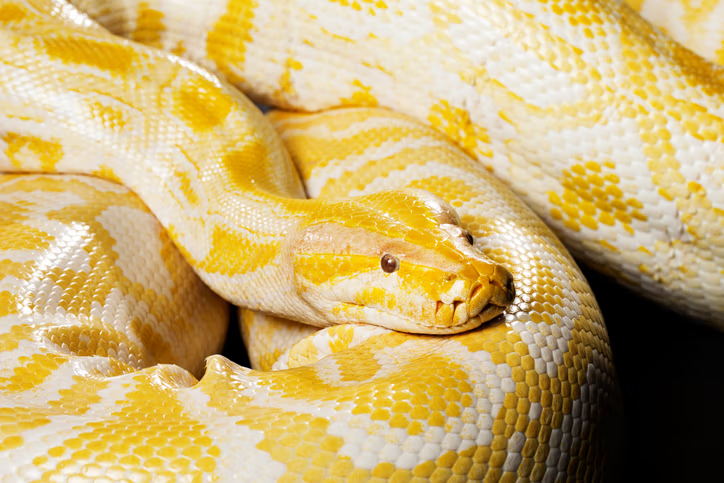The Burmese python is one of the largest species of snakes. It is native to a large area of Southeast Asia and is listed as Vulnerable on the IUCN Red List. Until 2009, it was considered a subspecies of the Indian python, but is now recognized as a distinct species.
Native to southern and southeastern Asia. They are found in tropic and subtropical areas, usually in trees and often near water and seem to be a semi-aquatic species. This species has established itself quite well in the Florida everglades, due to owners who cannot handle them anymore and releasing them. Unfortunately, now these snakes are preying on native species in the everglades, making them an invasive species in south Florida.
These pythons are carnivores and prey on birds and mammals. They are often found near human habitat due to the large numbers of rats, mice and other vermin. Exceptionally large specimens have been known to attack pigs, goats, deer and alligators. The snake uses its sharp rearward-pointing teeth to seize its prey, then wraps its body around the prey, at the same time contracting its muscles, killing the prey by constriction.

Most adult Burmese Pythons are about 10-16 feet in total length. These are very large, stout-bodied snakes with dark brown blotches down the back and sides. The blotches are variable in size and shape, and they are bordered in black. The background coloration between the blotches is usually tan, tannish yellow, or cream colored. The top of the head is dark with a light stripe on both sides of the head that extends through the eye to converge on the nose, forming a dark V-pattern. Juvenile color pattern is similar to that of adults, except the coloration is more vivid.
Pythons show a higher degree of parental care than many other reptiles – they actually incubate the eggs using heat generated by muscle twitches.



